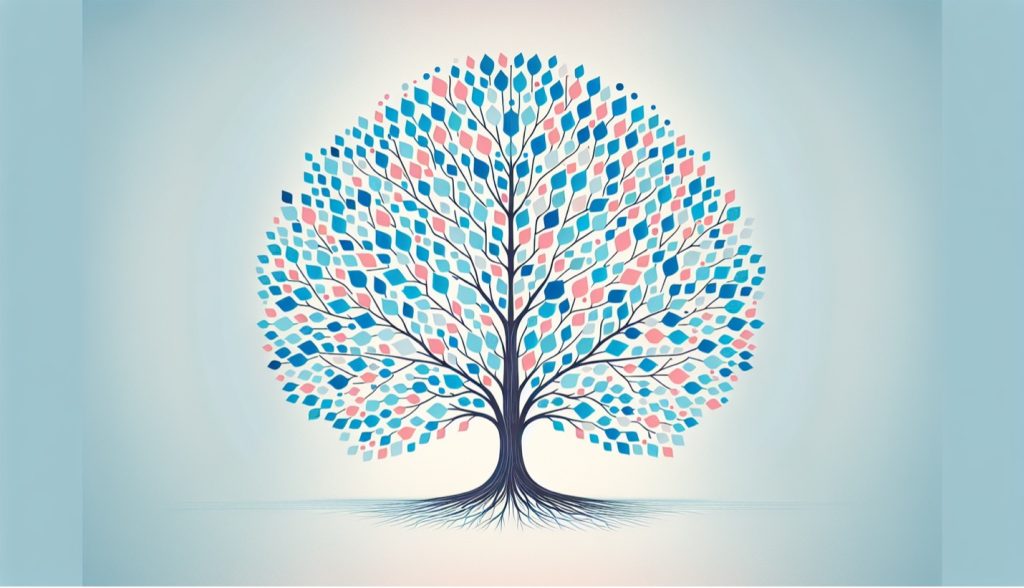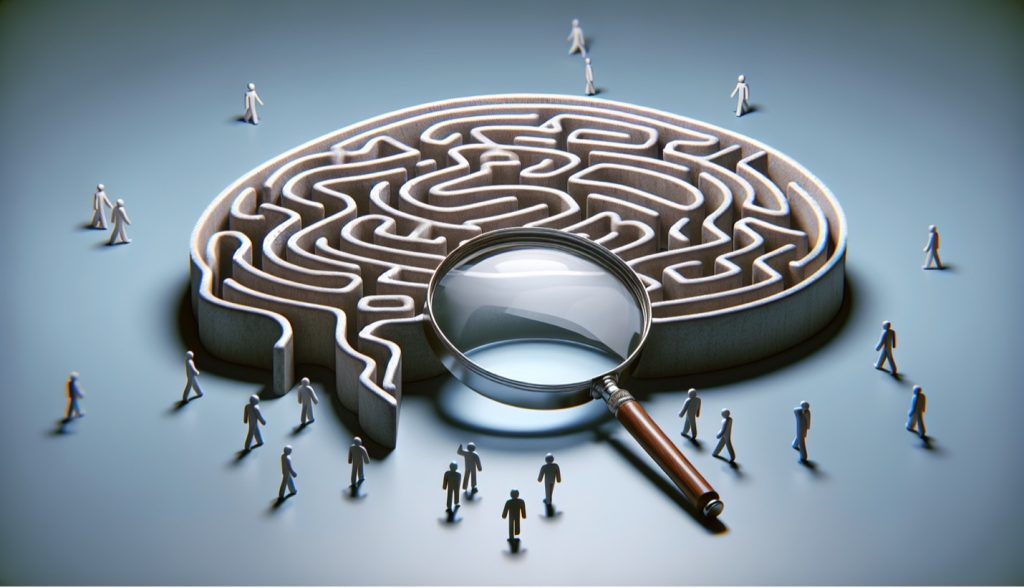Understanding Depression: Symptoms, Treatment, and Managing Wellness
Struggling with persistent sadness, loss of interest, or other unshakeable symptoms could suggest depression, a common but serious health issue. This article simplifies the complex topic of depression, highlighting its various forms and the importance of recognizing its mental and physical signs. We delve into the risk factors and treatments for depression, providing hopeful insights for those seeking to understand and manage the profound effects of depression on daily life.
Key Takeaways
- Depression is a serious medical condition with symptoms that require at least two weeks to diagnose, and it can be influenced by a variety of factors including biochemistry, genetics, personality, and environmental conditions. Women are particularly susceptible due to hormonal, biological, and psychosocial factors.
- Treatment for depression is multifaceted, often requiring personalized plans that can include medication, psychotherapy, and lifestyle changes such as exercise and light therapy; psychotherapy methods like CBT and DBT are pivotal in managing symptoms.
- Proper management and prevention measures are key to avoiding relapse in depressive patients, with continued therapy and psychosocial support necessary for maintaining mental health over the long term, especially when there’s a history of severe episodes or coexisting conditions.
Understanding Depression: Symptoms, Treatment, and Managing Wellness

Depression, often referred to as major depressive disorder, is a serious medical illness that substantially affects one’s feelings, thoughts, and actions. This pervasive condition, which includes depressive disorders and other mental disorders, influences individuals across all ages, races, and socioeconomic statuses. Though it can affect anyone, women tend to be more vulnerable, with genetics significantly contributing to its heritability.
Depression is not just a fleeting bout of sadness or a temporary reaction to life’s struggles. It’s a persistent condition that must cause symptoms lasting at least two weeks and representing a significant change from previous functioning for a diagnosis to be made. These symptoms range from mild to severe and include:
- feelings of sadness
- loss of interest
- changes in appetite
- sleep disturbances
- fatigue
Depression doesn’t occur in a vacuum. Various risk factors converge to trigger this condition, from biochemistry and genetics to personality traits and environmental exposures. For example, individuals exposed to violence, neglect, abuse, or poverty are at a heightened risk of developing depression.
While the statistics and the symptoms may seem daunting, there is hope. A significant aspect of depression is that it’s treatable. With the right combination of medication, psychotherapy, and lifestyle changes, individuals can manage the symptoms and lead fulfilling lives.
Introduction
Globally, depression affects about 3.5% to 4.4% of the population, a staggering figure that underscores the widespread prevalence of this condition. In America alone, the Centers for Disease Control and Prevention report that nearly one in five adults experience symptoms of depression within a given two-week period.
The influence of depression extends well beyond the individual, significantly impacting daily life and productivity. It can result in work absences, diminished efficiency, and strained relationships, further amplifying the distress experienced by the individual. Moreover, the risk factors for depression span biochemistry, genetics, personality, and environmental conditions, underscoring the interplay between various biological, social, and psychological contributors.
The Many Faces of Depression

Depression is not a monolithic entity. It can take several forms, each with its unique characteristics and symptoms. The two main types of depression are major depressive disorder, often referred to as major depression or clinical depression, and persistent depressive disorder, a milder yet chronic form of depression.
Compared to men, women are at a higher risk of experiencing depression. This discrepancy is attributed to a blend of factors, including:
- Hormonal changes
- Biological differences
- Life cycle events (such as pregnancy and menopause)
- Psychosocial factors (such as societal expectations and gender roles)
- Genetic predisposition (those with a family history of depression are more vulnerable)
These factors contribute significantly to the likelihood of developing depression in women.
In addition to these factors, environmental exposures such as:
- violence
- neglect
- abuse
- poverty
can significantly contribute to the risk of developing depression. This interconnected web of factors illustrates the multifaceted nature of depression, necessitating a comprehensive and personalized approach to treatment and management.
Recognizing the Signs

Recognizing depression’s symptoms is the first step towards seeking help and beginning the road to recovery. These symptoms can vary in severity and duration, affecting mood, physical health, and behavior differently across individuals.
Let’s explore these symptoms in detail, focusing on the physical, emotional, and behavioral changes indicative of depression.
Physical Symptoms Unveiled
The physical symptoms of depression can be just as impactful as its emotional effects. Fluctuations in appetite and weight, such as overeating or undereating, can serve as substantial markers of this condition. Sleep disturbances, including insomnia and hypersomnia, can further compound the individual’s distress, disrupting their daily routines and overall well-being.
Chronic joint pain, limb pain, back pain, and gastrointestinal problems can also be prevalent in people with depression, often correlating with the severity of the depressive mood. It’s worth noting that 30 to 85 percent of patients suffering from chronic pain are clinically depressed, and chronic pain increases the risk of death by suicide two to three times. For further reading and supporting references, you can visit this comprehensive study on the relationship between chronic pain and depression.
In senior adults, depression can manifest as memory difficulties, physical aches, fatigue, and loss of appetite, often exacerbated by factors like social isolation and significant health problems.
Emotional Turmoil
The emotional symptoms of depression can cause substantial distress, profoundly impacting an individual’s internal world. Common emotional symptoms include:
- feelings of hopelessness
- worthlessness
- intense guilt
- a pessimistic outlook on life
- persistent sadness
These feelings reflect significant disturbances in mood, often indicative of a mood disorder, and can deeply affect the person’s quality of life.
Anhedonia, the inability to find pleasure in life and a loss of interest in activities that were previously enjoyable, is a significant symptom that intensifies the emotional distress in depression. Furthermore, individuals with depression may exhibit chronic irritability and bouts of unexplained anger, especially evident in adolescents and men.
Excessive worry and anxiety often co-occur with depression, further complicating the emotional turmoil and leading to difficulties in decision-making on even routine matters.
Behavioral Changes
Depression doesn’t only wreak havoc on your emotions and physical health; it also significantly impacts behavior. One of the telltale signs of depression is social withdrawal. Individuals with depression often pull away from social activities and lose interest in hobbies they once enjoyed.
Depression can also affect performance at work or school, often due to difficulty concentrating and a lack of motivation. In some cases, individuals may resort to substances such as alcohol or drugs as a coping mechanism, potentially leading to substance use disorders. Other observable behavioral changes include alterations in energy levels, resulting in lethargy or slowed movements, and neglect of personal hygiene and appearance.
Screening for Depression

Screening is a critical step in the diagnosis and treatment of depression. Mental health professionals use validated questionnaires such as:
- PHQ-2
- PHQ-9
- Edinburgh Postnatal Depression Scale (EPDS)
- Geriatric Depression Scale
To periodically screen patients for depression, including monitoring for depressive episodes.
These psychological tests, including the Beck Depression Inventory and PHQ-9, ask personal questions to assess the participant’s mental state and measure the severity of their depression. These tools aid therapists in identifying patterns of depression symptoms and monitoring the progression or recovery of the patient’s mental health.
Personalized Treatment Paths

Treatment for depression is not universally applicable. Instead, it necessitates the development of personalized treatment plans that consider the individual’s:
- unique symptoms
- side effects
- responses to previous treatments
- personal circumstances.
Mild major depression, which can also be referred to as mild depression, can be effectively treated with either medication or psychotherapy. However, moderate to severe or chronic depression often requires a combination of both medication and psychotherapy.
Psychotherapy as a Pillar
Psychotherapy, commonly known as “talk therapy,” forms a crucial pillar in the treatment of depression. Cognitive Behavioral Therapy (CBT) is one such approach that focuses on uncovering unhealthy thought patterns and replacing them with more positive thoughts. Here is a supporting reference for further reading on CBT. This method is particularly effective because it empowers individuals to take an active role in their recovery by developing coping strategies and problem-solving skills that can be applied to everyday situations.
Aside from CBT, other forms of psychotherapy like Dialectical Behaviour Therapy (DBT), Psychodynamic therapy, and Interpersonal Therapy (IPT) are also utilized. Here is a supporting reference for further reading on psychotherapy. DBT is particularly useful for individuals who experience intense emotions and struggle with interpersonal relationships. It combines standard cognitive-behavioral techniques with concepts of distress tolerance, acceptance, and mindful awareness. Psychodynamic therapy delves into the psychological roots of emotional suffering, focusing on building insight into the unconscious influences and past experiences that shape current behaviors. Meanwhile, IPT is a time-limited therapy that centers on resolving interpersonal problems and symptomatic recovery, emphasizing the importance of social relationships in the development and recovery from depression.
Group therapy and Behavioural therapy are also beneficial, providing support among individuals and allowing behavioral observation in a social context. Group therapy offers a safe environment where individuals can share experiences and learn from others facing similar challenges, fostering a sense of community and support. Behavioural therapy focuses on changing negative behaviors through conditioning and reinforcement, helping individuals to engage in activities that can increase their sense of well-being and reduce depressive symptoms.
These psychotherapies, often in conjunction with medication, have demonstrated efficacy in treating depression, enhancing treatment outcomes, and contributing to sustained remission with depression treated effectively.
Beyond Medication: Holistic Approaches
Though medication and psychotherapy are foundational to depression treatment, several alternative and holistic strategies can aid in managing the condition. Regular physical activity, light therapy, along with complementary options like St. John’s Wort, can enhance traditional treatments, providing a comprehensive approach to depression management.
Exercise for Mental Health
Regular physical activity offers several benefits for individuals with depression. Exercise can improve mood, reduce stress, and enhance sleep, all crucial factors in managing depression and anxiety. Studies indicate that structured, consistent exercise leads to significant improvements in depression, comparable to the effects of antidepressant medications. Here is a supporting reference for further reading on exercise and depression.
Exercise prescriptions for treating depression often recommend 20 minutes of moderate-intensity activity per day, three times a week. Both aerobic and nonaerobic exercises, including resistance training, are effective in reducing depression symptoms, offering immediate benefits from even short-term activities. Moreover, regular involvement in physical exercise may provide long-lasting benefits, maintaining improvements in depression, anxiety, and self-concept up to 12 months.
Light Therapy for Seasonal Patterns
For individuals with a seasonal pattern to their depression, light therapy offers a ray of hope. Seasonal affective disorder (SAD) is a type of depression influenced by the availability of sunlight, with melatonin, a hormone related to sleep and darkness, serving as a key link. Here is a supporting reference for further reading on SAD.
Light therapy involves exposure to a light box emitting bright light comparable to natural sunlight. This exposure can mitigate the secretion of melatonin and support mood regulation.
Benefits of light therapy include:
- Reducing symptoms of depression
- Improving sleep patterns
- Boosting energy levels
- Alleviating seasonal affective disorder (SAD)
Morning light therapy is more effective than evening light therapy in reducing depression symptoms, with improvements often seen within a week of starting treatment.
Benefits similar to light therapy can be gained from natural light exposure, with a bright sunny day providing much more lux than what is typically required for light therapy.
Complementary Options
In addition to exercise and light therapy, several complementary options can support depression management. One such option is St. John’s Wort, a supplement derived from a flowering plant used to treat mild to moderate depression symptoms. Here is a supporting reference for further reading on St. John’s Wort and depression.
However, it’s crucial to consider potential side effects and interactions with other medications. St. John’s Wort can cause the following side effects:
- Agitation
- Anxiety
- Dizziness
- Gastrointestinal issues
- Fatigue
- Insomnia
It’s also known to interact with various medications such as antidepressants and chemotherapy drugs, potentially causing severe side effects and impacting the efficacy and safety of the treatments. Therefore, St. John’s Wort is not recommended for use during pregnancy or breastfeeding due to safety concerns.
Another complementary approach is the use of collaborative care models, which involve healthcare providers working together across disciplines. This model has shown to be superior in treating patients with mild to moderate depression compared to usual care.
Omega-3 fatty acid supplements, like fish oil, may also positively affect brain function and thus play a role in managing depression symptoms. Here is a supporting reference for further reading on Omega-3 fatty acids and depression.
When to Seek Specialized Help
Identifying the need for specialized help is vital for effectively managing severe depression. Should depression be severe or persist despite treatment efforts, it is imperative to seek professional assistance. Symptoms such as suicidal thoughts or treatment resistance are strong indicators that specialized help is needed.
Professional assistance from a mental health professional is also necessary in managing complex conditions like bipolar disorder, characterized by mood swings, irritability, or frustration over minor issues. Specialized providers can create personalized treatment plans after considering conditions like hormonal imbalances, ensuring timely intervention for better emotional and physical well-being.
Long-term Management and Relapse Prevention
Depression management extends beyond dealing with current symptoms to preventing future relapses. Continuing therapy for 9-12 months beyond the acute phase of depression and including psychosocial support can further diminish the likelihood of relapse.
The likelihood of depression reoccurring is higher after severe episodes or when co-existing conditions like anxiety or substance abuse are present. Therefore, preventative strategies including:
- Stress management
- Seeking social support
- Early treatment intervention
- Ensuring the resolution of physical symptoms
are essential for long-term depression management and relapse prevention.
Summary
Depression, a common yet severe mental health condition, wears many faces. It can disrupt daily life, relationships, and productivity and can manifest in several forms, each with its unique set of symptoms and challenges. However, with the right knowledge, resources, and support, it’s possible to manage depression effectively and lead a fulfilling life.
Arming oneself with information about depression, recognizing the signs, understanding the various treatment approaches, and knowing when to seek help are crucial steps on the road to recovery. Remember, depression is not a life sentence. It’s a journey, and like all journeys, it begins with a single step. So, take that step today. Reach out, seek help, and embark on your path to wellness.
Frequently Asked Questions
What are the 4 main causes of depression?
Family history, personality, serious medical illness, and drug and alcohol use are the four main causes of depression. If you have a family history of depression, an increased genetic risk, or certain personality traits, you may be more susceptible to experiencing depression. This susceptibility can be further influenced by serious medical illnesses, drug and alcohol use, and life events.
What exactly happens in depression?
Depression is a mood disorder that causes persistent feelings of sadness, loss of interest, and anhedonia, leading to difficulty with thinking, memory, eating, and sleeping. It can also result in symptoms such as tearfulness, anger, irritability, and loss of interest in normal activities.
What are the 4 most common types of depression?
The four most common types of depression are major depression, persistent depressive disorder, bipolar disorder, and seasonal affective disorder. Major depression is a constant and overwhelming feeling of being sad, while persistent depressive disorder involves a depressed mood for most of the day, for more days than not.
What is the true meaning of depression?
Depression is characterized by a constant feeling of sadness and loss of interest, which hinders one’s ability to engage in normal activities. It can stem from a variety of events and factors, and encompasses different types with varying symptoms.
What are the primary types of depression?
The primary types of depression are major depressive disorder and persistent depressive disorder, with major depressive disorder being the more severe form.
